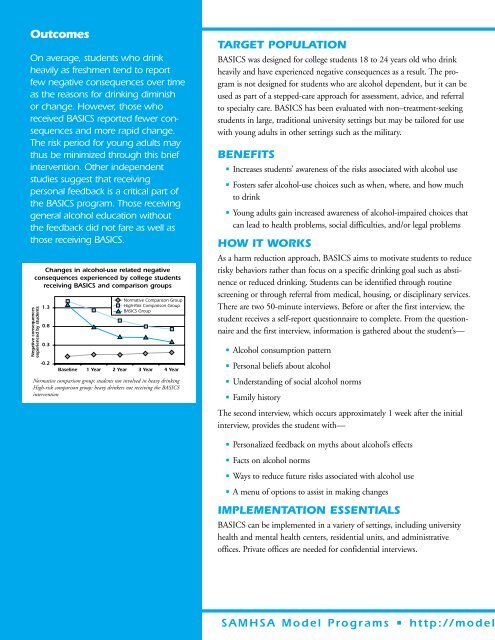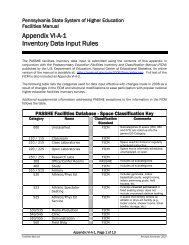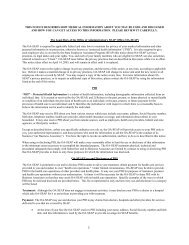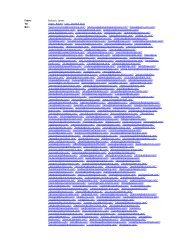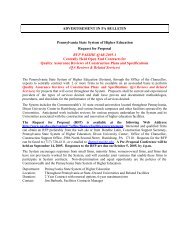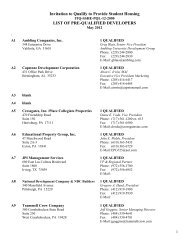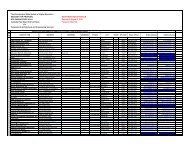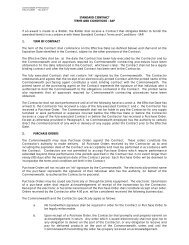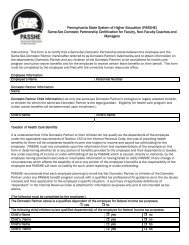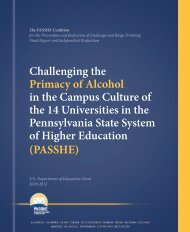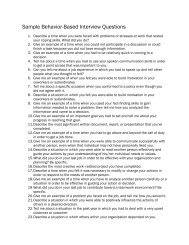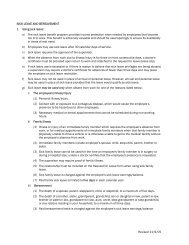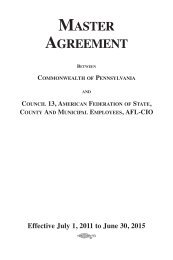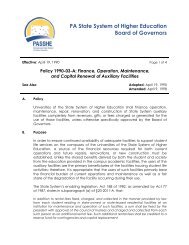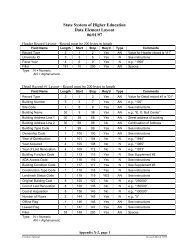BASICS Brief Alcohol Screening and Intervention of College Students
BASICS Brief Alcohol Screening and Intervention of College Students
BASICS Brief Alcohol Screening and Intervention of College Students
Create successful ePaper yourself
Turn your PDF publications into a flip-book with our unique Google optimized e-Paper software.
OutcomesOn average, students who drinkheavily as freshmen tend to reportfew negative consequences over timeas the reasons for drinking diminishor change. However, those whoreceived <strong>BASICS</strong> reported fewer consequences<strong>and</strong> more rapid change.The risk period for young adults maythus be minimized through this briefintervention. Other independentstudies suggest that receivingpersonal feedback is a critical part <strong>of</strong>the <strong>BASICS</strong> program. Those receivinggeneral alcohol education withoutthe feedback did not fare as well asthose receiving <strong>BASICS</strong>.Changes in alcohol-use related negativeconsequences experienced by college studentsreceiving <strong>BASICS</strong> <strong>and</strong> comparison groupsNegative consequencesexperienced by students1.30.80.3-0.2Normative Comparison GroupHigh-Risk Comparison Group<strong>BASICS</strong> GroupBaseline 1 Year 2 Year 3 Year 4 YearNormative comparison group: students not involved in heavy drinkingHigh-risk comparison group: heavy drinkers not receiving the <strong>BASICS</strong>interventionTARGET POPULATION<strong>BASICS</strong> was designed for college students 18 to 24 years old who drinkheavily <strong>and</strong> have experienced negative consequences as a result. The programis not designed for students who are alcohol dependent, but it can beused as part <strong>of</strong> a stepped-care approach for assessment, advice, <strong>and</strong> referralto specialty care. <strong>BASICS</strong> has been evaluated with non–treatment-seekingstudents in large, traditional university settings but may be tailored for usewith young adults in other settings such as the military.BENEFITS• Increases students’ awareness <strong>of</strong> the risks associated with alcohol use• Fosters safer alcohol-use choices such as when, where, <strong>and</strong> how muchto drink• Young adults gain increased awareness <strong>of</strong> alcohol-impaired choices thatcan lead to health problems, social difficulties, <strong>and</strong>/or legal problemsHOW IT WORKSAs a harm reduction approach, <strong>BASICS</strong> aims to motivate students to reducerisky behaviors rather than focus on a specific drinking goal such as abstinenceor reduced drinking. <strong>Students</strong> can be identified through routinescreening or through referral from medical, housing, or disciplinary services.There are two 50-minute interviews. Before or after the first interview, thestudent receives a self-report questionnaire to complete. From the questionnaire<strong>and</strong> the first interview, information is gathered about the student’s—• <strong>Alcohol</strong> consumption pattern• Personal beliefs about alcohol• Underst<strong>and</strong>ing <strong>of</strong> social alcohol norms• Family historyThe second interview, which occurs approximately 1 week after the initialinterview, provides the student with—• Personalized feedback on myths about alcohol’s effects• Facts on alcohol norms• Ways to reduce future risks associated with alcohol use• A menu <strong>of</strong> options to assist in making changesIMPLEMENTATION ESSENTIALS<strong>BASICS</strong> can be implemented in a variety <strong>of</strong> settings, including universityhealth <strong>and</strong> mental health centers, residential units, <strong>and</strong> administrative<strong>of</strong>fices. Private <strong>of</strong>fices are needed for confidential interviews.SAMHSA Model Programs • http://model


